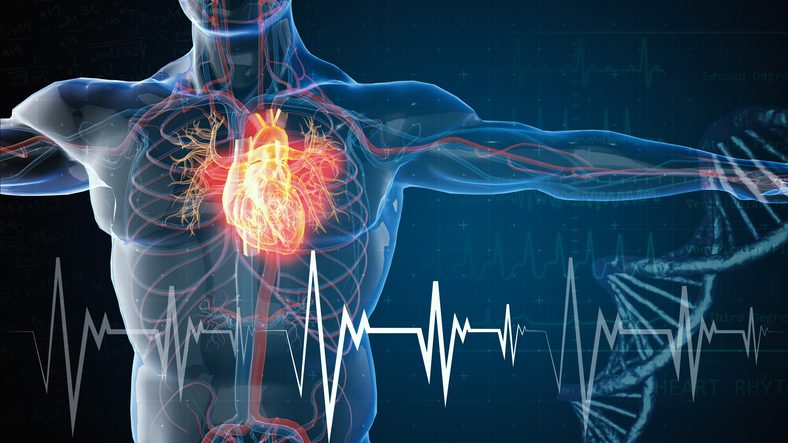Train smarter in 2022: Gauge your fitness levels through Heart Rate Variability and Resting Heart Rate
Everything you need to know about heart rate variability (HRV) and other similar ways to gauge one's fitness and recovery status
 Photo by:
Getty Images
Photo by:
Getty Images
Devices that measure heart rate variability (HRV), such as Whoop and the Oura Ring, are becoming increasingly popular. Just like any tool, these devices are only useful if we understand what they measure and are able to use the information that the instrument provides intelligently. Here is a brief overview of the autonomic nervous system and the different measures associated with the autonomic nervous system.
The autonomic nervous system
The autonomic nervous system (ANS) regulates several physiological processes such as breathing and blood pressure.
The autonomic nervous system is divided into:
- Sympathetic: This system is responsible for increasing heart rate, speeding up breathing, dilating the pupils and stimulating the body. This system is sometimes called the “fight or flight” system since it is this system that comes into play in the event of a dangerous or stressful situation.
- Parasympathetic: this system opposes the sympathetic system by slowing down the functions of the body. This system is sometimes called the “rest and digest” system, since it mainly deals with rest and digestion.
Physical activity has an effect on the autonomic nervous system by increasing parasympathetic activity and decreasing sympathetic activity, which has a protective effect against cardiovascular problems. Also, overtraining, which affects about 65 per cent of top athletes at least once in their careers, has an effect on the autonomic nervous system. The effect of overtraining on the autonomic nervous system is not yet very clear, but it is theorized that at first the sympathetic system is dominant, then subsequently the sympathetic system is inhibited and the parasympathetic system becomes dominant.
The three main measures of autonomic nervous system status are heart rate recovery, resting heart rate, and heart rate variability (or variation).
Heart rate recovery
Heart rate recovery (HRR) is the measure of how long it takes for the heart rate to reach rest values following physical exertion. The increase in heart rate following the onset of physical exertion, as well as the decrease in heart rate after the end of exertion, are both regulated by the autonomic nervous system. The increase in heart rate is caused by an increase in the activity of the sympathetic system and a decrease in the activity of the parasympathetic system. The decrease in heart rate at the end of the effort is caused by a reactivation of parasympathetic activity and a decrease in sympathetic activity.
HRR can be a good clue to an athlete’s fitness. Indeed, a rapid return to the frequency of rest following an effort is an indicator of a high state of fitness. For example, HRR has been shown to decrease (so recovery time is faster) after eight weeks of training in untrained people. Also, when we compare untrained people to athletes, we notice that the HRR is better in athletes.
In addition to being a good indicator of fitness, HRR is also a good indicator of recovery status. Indeed, in periods of overload (overreaching or even overtraining) the recovery time of the heart rate following an effort increases, which means that an athlete should consider reducing the training load or taking a day of rest.
How to measure HRR
There are several ways to measure HRR. It’s important to use the same test each time to see if there is actually an improvement or deterioration in HRR. The important thing is not to use a fixed intensity, for example a wattage on a bike or a speed in running, but rather to use a relative intensity as a percentage of the maximum heart rate. For example, you can measure the decrease in heart rate during a period of one or two minutes following a five-minute effort at an intensity between 90 and 95 per cent of the maximum heart rate. So, depending on your state of fitness, the intensity (wattage or speed) corresponding to 90 to 95 per cent of the maximum heart rate will vary, which makes it possible to really determine the improvement or deterioration of your HRR without it being affected by the intensity of the effort.
Resting Heart Rate
Resting heart rate (RHR) is also a good indicator of fitness status, as well as the level of recovery or overwork. Also, a high resting heart rate is an index of high risk of cardiovascular disease and is a better clue than a small change in heart rate.
With training, the resting heart rate tends to decrease. This has the effect of increasing the heart rate reserve (HR reserve), or the difference between the maximum heart rate and the resting heart rate.
The advantage of measuring resting heart rate is its simplicity, both for measuring and analyzing it. Indeed, unlike HRV, which is a more complex measure, the resting heart rate is a very simple measurement. All you have to do is measure one’s heart rate when lying down, or to measure it during sleep using a device such as Whoop or the Oura Ring.
Heart Rate Variability (HRV)
Heart rate variation (HRV) is the measure of the variation in time between each heartbeat. The most accurate way to measure HRV is to use an electrocardiogram and measure the time variation between “R” peaks, but it is also possible to measure HRV using a heart rate monitor, on the wrist with a device like Whoop, or on the finger with a device like the Oura Ring.
Although HRV is a relatively simple measurement, there are several ways to measure heart rate variation, which makes this measurement more complex and makes it more complicated to compare HRV values between different devices. Also, several devices that measure HRV do not indicate the method used for measurement, or whether the data is measured in the morning when waking up, or at night when sleeping. If, for example, HRV is measured during sleep at a specific time rather than taking an average for the entire night, the measurement may be affected by the sleep cycle (deep or mild). So all these factors complicate the measurement of HRV. It does remain an interesting and relevant measurement, though.
HRV is affected by acute training – either hard sessions or a big block of training. (Psychological stress also affects HRV). A high HRV is indicative of an increase in parasympathetic activation and a decrease in sympathetic activity – that means an athlete is in good shape and is ready to perform. A decrease in HRV is indicative of fatigue. A low HRV is not necessarily bad, since it means that the athlete has a good training load and is accumulating fatigue, but if the HRV remains low for a very long period of time, it may be indicative of a period of overload – too much training and/ or not enough rest.
In short, heart rate recovery, resting heart rate, as well as heart rate variability are all interesting measures that can give a good idea of an athlete’s state of fitness and recovery. Personally, I use the Whoop bracelet and I am as interested in HRV as I am in resting heart rate. However, it reminds us that these measures are tools to guide our training, and that we should not rely 100 per cent on these measures. For example, it is also important to take into consideration the perception of effort, the perceived fatigue at rest and during training, and the level of motivation. All this information should be considered, rather than relying solely on a single measure.

